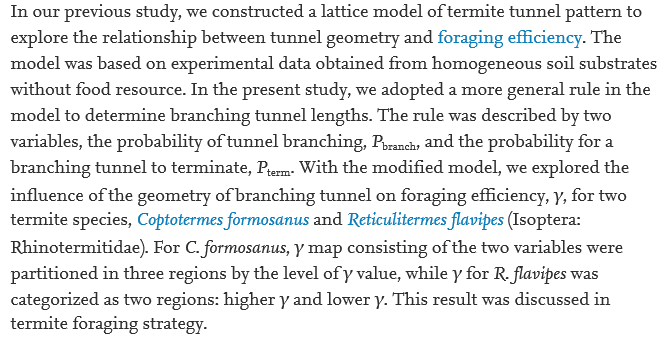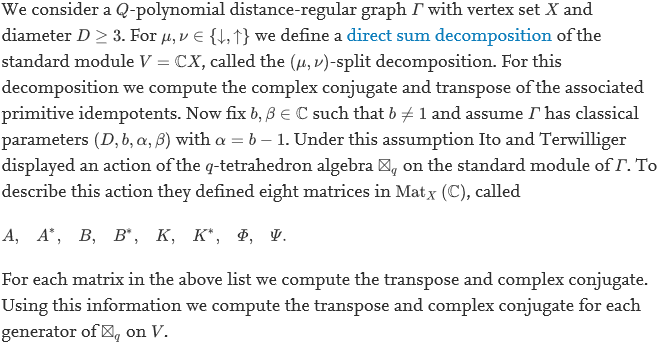Thunnel volume regulation and group size of Subterranean termites (Isoptera; Rhinotermitidae)
Nan-Yao Su; Sang-Hee Lee
|
Annals of the Entomological Society of America, Volume
102
(2009)
- 초록
Tunnel volumes excavated by laboratory groups of the Formosan subterranean termite, Coptotermes formosanus Shiraki (Isoptera: Rhinotermitidae), and the eastern subterranean termite, Reticulitermes flavipes (Kollar) (Isoptera: Rhinotermitidae) were measured by using two-dimensional foraging arenas. Group sizes of 20, 40, 60, 80, 100, and 200 termites were used for the study. Analysis of the images of tunnels taken hourly showed tunnel volume increased and eventually reached equilibrium for both termite species, but Co. formosanus reached the equilibrium faster at lower volume than R. flavipes. Co. formosanus constructed fewer primary tunnels with less branching than R. flavipes and no additional tunneling activity was observed once the tunnel volume reached equilibrium. R. flavipes, however, continued tunnel excavation even after reaching equilibrium, but the equilibrated volume was maintained by filling unused tunnels with sand excavated from newly dug tunnels. For each termite species, the tunnel volume equilibrium was proportional to the group size. The mean individual tunnel volume (mm3 per termite ± SE) of all group sizes computed over the whole experiment was significantly higher for R. flavipes (198.58 ± 1.21) than for Co. formosanus (84.24 ± 0.59). The shape of the growth curves for tunnel volumes indicated the presence of a double feedback system for termite tunneling activity, and we suggest that the positive relationship between nest and population size previously reported for numerous termites species is the result of the self-organized nest-building activity.
- 초록
Tunnel volumes excavated by laboratory groups of the Formosan subterranean termite, Coptotermes formosanus Shiraki (Isoptera: Rhinotermitidae), and the eastern subterranean termite, Reticulitermes flavipes (Kollar) (Isoptera: Rhinotermitidae) were measured by using two-dimensional foraging arenas. Group sizes of 20, 40, 60, 80, 100, and 200 termites were used for the study. Analysis of the images of tunnels taken hourly showed tunnel volume increased and eventually reached equilibrium for both termite species, but Co. formosanus reached the equilibrium faster at lower volume than R. flavipes. Co. formosanus constructed fewer primary tunnels with less branching than R. flavipes and no additional tunneling activity was observed once the tunnel volume reached equilibrium. R. flavipes, however, continued tunnel excavation even after reaching equilibrium, but the equilibrated volume was maintained by filling unused tunnels with sand excavated from newly dug tunnels. For each termite species, the tunnel volume equilibrium was proportional to the group size. The mean individual tunnel volume (mm3 per termite ± SE) of all group sizes computed over the whole experiment was significantly higher for R. flavipes (198.58 ± 1.21) than for Co. formosanus (84.24 ± 0.59). The shape of the growth curves for tunnel volumes indicated the presence of a double feedback system for termite tunneling activity, and we suggest that the positive relationship between nest and population size previously reported for numerous termites species is the result of the self-organized nest-building activity.
자세히보기


















